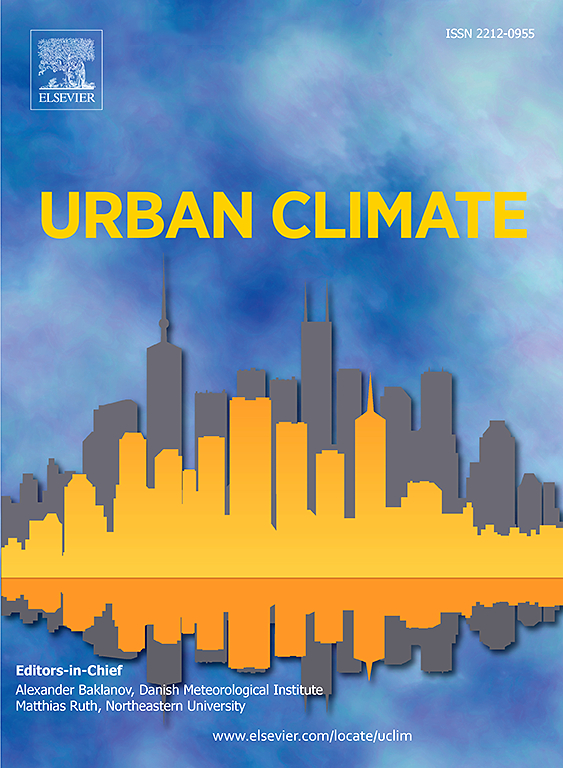Emission offsets by albedo manipulations strategies based on bright materials and greening in urban areas assessed by hyperspectral remote sensing
IF 6
2区 工程技术
Q1 ENVIRONMENTAL SCIENCES
引用次数: 0
Abstract
Climate neutral cities require climate mitigation strategies such as albedo manipulation approaches. This could be a low-cost approach able to reach short term results while working on reducing emissions on the long term. Currently, only few studies were carried out to investigate the potentiality of albedo changes to effectively reduce radiative forcing (RF) at city scale. This study makes use of high-resolution hyperspectral remote sensing (RS) to simulate three scenarios of albedo manipulation in the city of Prato (Italy). The scenarios are “W” (white, where roofing materials are substituted by white painted concrete), “G” (green, simulating the albedo of green roofs) and “B” (bright, where the dark asphalt of the roads is substituted by brighter paving materials), also considering restrictions due to cultural heritage constraints. Albedo manipulation is then translated into equivalent CO2 savings/emissions via a global warming potential (GWP) model and these CO2 amounts are compared with the city's inventorial emissions. Results show that the W scenario can offset up to 10.3 % of the whole city's emissions. This study suggests that while RF-based interventions on urban materials are unable to totally compensate direct CO2eq emissions, they can still contribute especially when coupled with decarbonization and urban emission reduction strategies.
高光谱遥感评估基于明亮材料和绿化的城市地区反照率操纵策略的排放抵消
气候中性城市需要诸如反照率操纵方法等气候缓解战略。这可能是一种低成本的方法,能够在长期减少排放的同时取得短期效果。目前,研究城市尺度反照率变化对有效降低辐射强迫的潜力的研究很少。本研究利用高分辨率高光谱遥感(RS)模拟了意大利普拉托市反照率操纵的三种情景。方案是“W”(白色,屋顶材料被白色粉刷的混凝土取代),“G”(绿色,模拟绿色屋顶的反照率)和“B”(明亮,道路的深色沥青被明亮的铺装材料取代),也考虑到文化遗产的限制。然后,通过全球变暖潜势(GWP)模型,将反照率控制转化为等值的二氧化碳节约/排放,并将这些二氧化碳量与城市的清单排放量进行比较。结果表明,W情景可以抵消整个城市排放量的10.3%。这项研究表明,虽然基于射频的城市材料干预措施不能完全补偿直接的二氧化碳当量排放,但它们仍然可以做出贡献,特别是在与脱碳和城市减排战略相结合的情况下。
本文章由计算机程序翻译,如有差异,请以英文原文为准。
求助全文
约1分钟内获得全文
求助全文
来源期刊

Urban Climate
Social Sciences-Urban Studies
CiteScore
9.70
自引率
9.40%
发文量
286
期刊介绍:
Urban Climate serves the scientific and decision making communities with the publication of research on theory, science and applications relevant to understanding urban climatic conditions and change in relation to their geography and to demographic, socioeconomic, institutional, technological and environmental dynamics and global change. Targeted towards both disciplinary and interdisciplinary audiences, this journal publishes original research papers, comprehensive review articles, book reviews, and short communications on topics including, but not limited to, the following:
Urban meteorology and climate[...]
Urban environmental pollution[...]
Adaptation to global change[...]
Urban economic and social issues[...]
Research Approaches[...]
 求助内容:
求助内容: 应助结果提醒方式:
应助结果提醒方式:


